|
Wartime Pictures , Blisworth, Northamptonshire, UK. All pictures are presented at relatively low resolution. There will be hundreds of pictures on this site - there is an economic limit to the webspace available. The point of this presentation is that you can see for yourself the extent of the collection and return later as the collection expands - as it surely will. Any interest in copies of a picture at a higher resolution (ie. clarity) should be directed through contacts given in the Blisworth "Round and About" parish council publication or using the comment form on the home page. In some cases the pictures are not available due to copyright restrictions. However, permission has been obtained, where possible, to include them here. Printed below each image is the photographer's name, if known. |
|
|
Extracts from George Freeston's diary 1940/1 - Blisworth events |
|
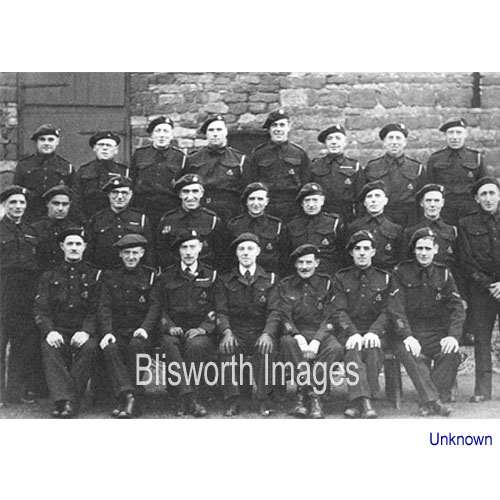 |
33-01 Blisworth Home Guard troop - date uncertain. Not many names at present but: L to R, back row, 4th Bernard Roper (manager at the bacon factory), 7th Bill Sturgess. Mid row, 2nd Bill Freeston. Front Row, 4th Alfred Thorpe, 6th Ron Freeston, 7th Leonard Perkins. |
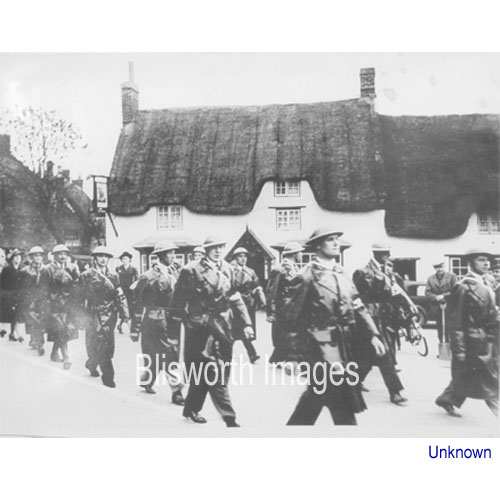 |
33-02 Air-raid wardens with the Royal Oak Inn in the background.
|
 |
33-03 Procession including the air-raid wardens.
|
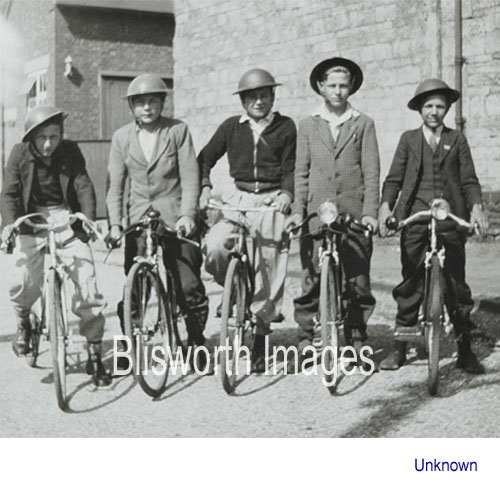 |
33-04 Some scouts in 1939 outside the bacon factory. They were helping the air-raid wardens as "runners". Within a short time nearly all of them joined the forces. |
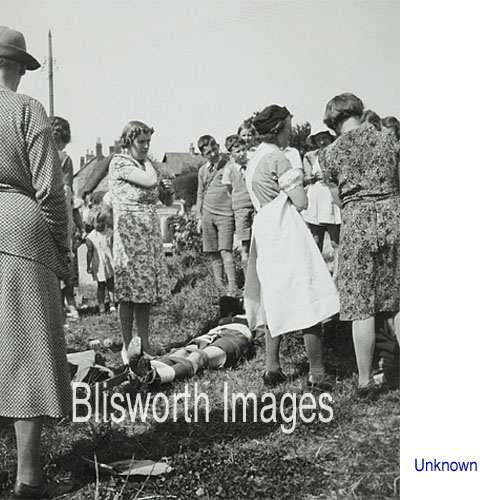 |
33-05 The WVS, women's volunteer service, running first aid training classes in the village. |
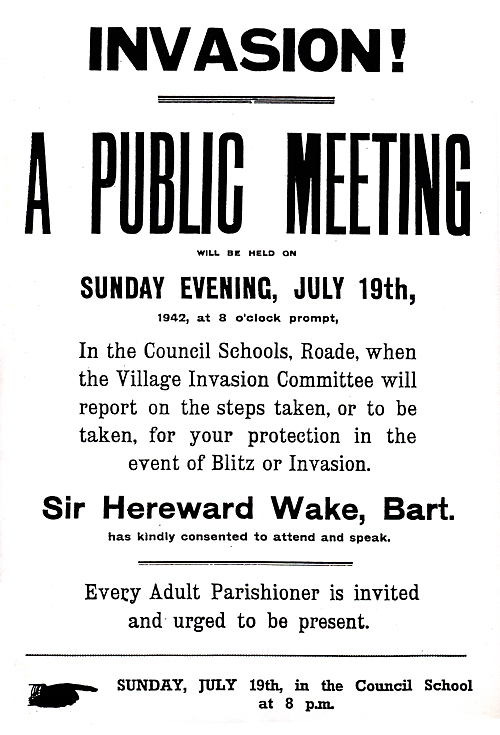 |
This speaks for itself! |
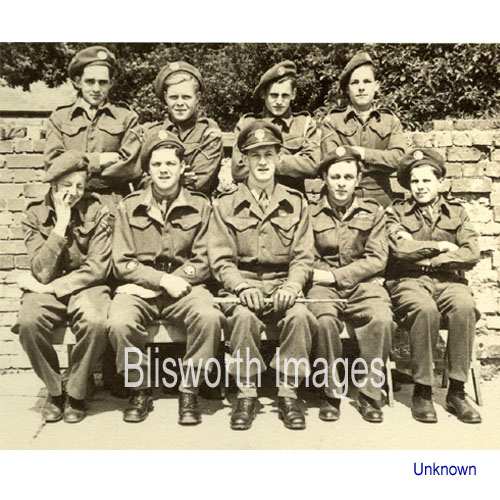 |
33-07 This picture and the next show groups of cadets. There was a cadet group in the village. Date 1944 - 45 in view of the caps being worn.. |
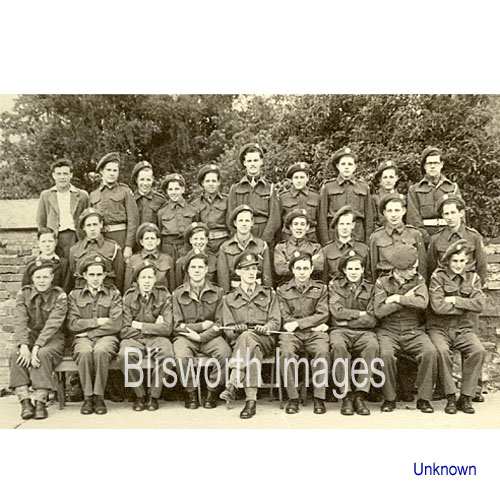 |
33-08 Cadet Assembly, back row, Geff Judge, Donald Hurst, John Shipperley, Gordon Judge, Les Judge, Allan Digby?, Peter Stuart, Ron Torry, - Hillyard, - Walker. Middle row, ?, ?, Richard Wooding, John Bass, - Cockane, Gordon Abbott, Eric Burton, Tom Bosworth, John Torry. Front row, Bob Kingston, Eddie Tompson, ?, Jim Curtis, Leader ?, ?, Fred Hurst, ?, Richard Sturgess. |
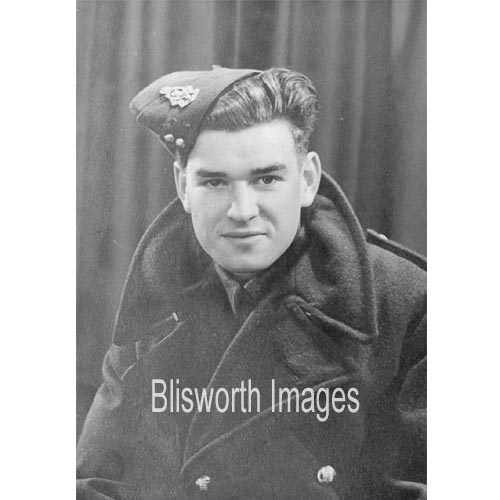 |
33-08a Stuart Woolacott, 2nd Dec 1940. |
|
33-09 Timber clearance for the war effort, 1942, on the banks of the canal near the tunnel. Some villagers helped: Stuart Woolacott with Sam (Derek) Cherry and 'Pip' Robinson. The logs were loaded onto S. T. Challis's wagons and taken to town, probably a railway station.
|
|
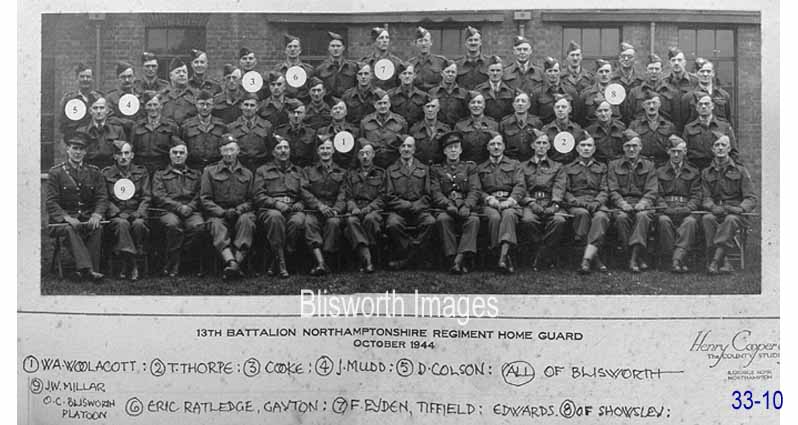 |
|
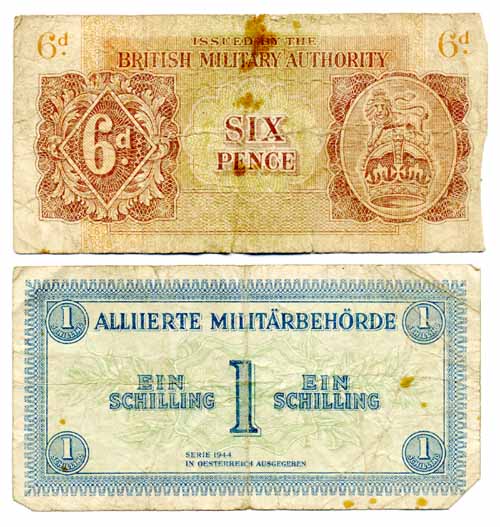 |
33-11 In the first and
second world wars, the British Military Authority issued to soldiers
money vouchers. During active combat this was not done (as far as
is known) but after "The Liberation" ie. when the soldiers were
occupying a foreign country the issue was then made. The money was
also known as 'Occupation Pay' and was only negotiable within a military
enclave. If anyone knows the point of this please write in to
explain. At demob the money was exchanged for real money.
Notes such as these are collectors pieces these days. These two were kept as souvenirs - the Austrian one, worth more like 2/- in those days and dated 1944, probably related to the German/Austrian occupation of Poland. No one has any idea how the Blisworth man, who brought these notes home, got hold of it. |
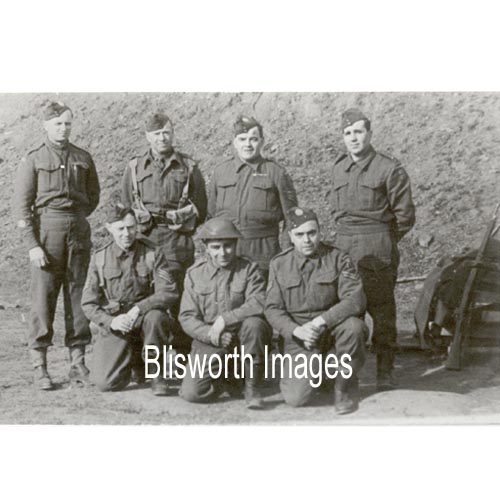 |
33-12 Members of the Homeguard
who remained together for a few years after the end of the war.
This photo was taken c. 1952* and shows they still possessed their rifles
and had formed a rifle club which practiced in a disused sandpit at
Milton Malsor, taking in members also from Gayton and Tiffield.
The cash residue of about £7 was divided between the Baptist and Church
Sunday schools and the Evergreens.
They probably continued to use the Home Guard explosives bunker in Thorpe's garden. Left to right, rear, Harold Yates (Warrant Officer), W. A. Woolacott (Officer), Charles Edwards (Sergeant), Frank Freeston (Private). Front, Thomas Thorpe (Sergeant), Bill Freeston (Private), Donald Edwards (Corporal). * doubt has been recently expressed about this date and that ex-homeguard men could have retained weaponry. If this is mis-information I am not sure who to blame for it! |
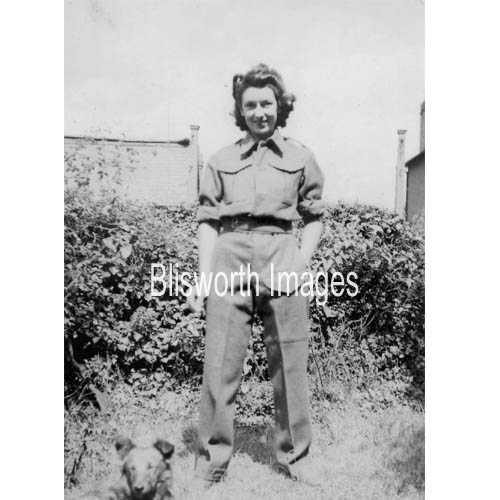 |
Miss Pamela Ayres, who was also
in the girl guides and a leading light in the formation of a 'Sea
Rangers' group, is pictured here in her Home Guard uniform. She was
enrolled in Sept 1943 as a Woman Home Guard Auxiliary and in her own
words, "we were recruited for our secretarial, first aid and
signalling skills - I remember going on maneuvres and dealing with
casualties". One other woman from Blisworth, a Miss E.
Barrett, was recruited to B Company and in Northamptonshire there were
nine other women recruited.
"We had the main line station and the canal in our area and so I suppose, with our signalling, we were part of the defense system. We had to be able to recognise enemy aircraft and know the distinctive noise they made especially at night. On bombing run returns (eg. Coventry) the enemy would lighten their load by dropping bombs". (with no aimed pattern) The features of the landscape such as the canal and the railway were mentioned by Lord Haw Haw (Rudolph Hess) in the German propaganda transmissions. |
 |
|
 |
Post war ration books, images from the 1953
scrapbook.
|